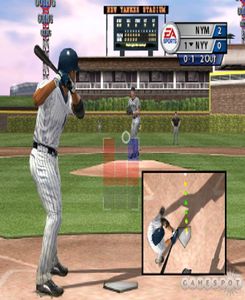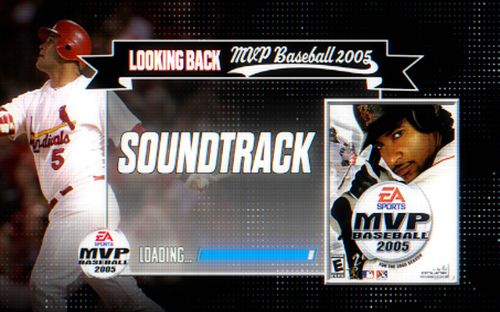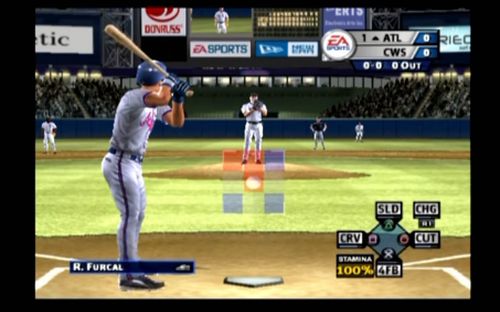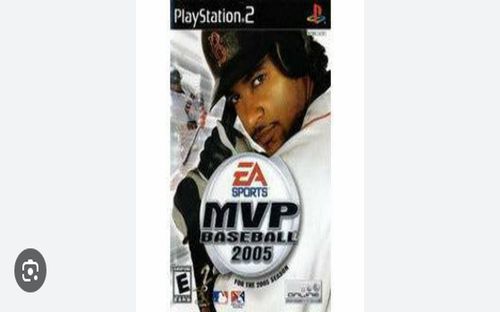One of the most well-known baseball video games of its generation is MVP Baseball 2005, created by EA Sports. It was released at a time when the sophistication and realism of sports video games were increasing quickly, and it succeeded in establishing a reputation for the sport’s heart and soul as well as its mechanics. Regardless of whether you were an avid MLB fan or just interested in the sport, MVP Baseball 2005 had an allure that was difficult to ignore.
The polished gameplay was the main factor in its success. Batting, pitching, and fielding all felt responsive and smooth, with just enough subtlety to please seasoned players and accessibility to greet newbies. The game brought a strategic element to the hitting experience by introducing a “hitter’s eye” system that let players better predict the sorts of pitches. Pitchers’ indications of stamina and poise increased realism and made gamers think like actual managers. The controls created an accurate experience without being annoying by striking a balance between simulation depth and arcade exhilaration.

All 30 MLB teams were represented in the game, and their fully licensed rosters reflected the actual 2005 campaign. The richness of data, trends, and scouting reports provided an incredibly immersive experience, and the user could personally edit the rosters. The game’s realism was further enhanced by the presentation, which included everything from the commentators to the noises of the crowd and stadium ambiance. Every stadium has its own distinct character, from Coors Field’s vast outfield to Fenway Park’s Green Monster, which were meticulously designed to give the settings a sense of life.
Standard exhibition games and simple season modes weren’t enough for MVP Baseball 2005. Players may take control of a team and oversee it over several seasons in its Franchise Mode, handling player development, trades, drafts, and finances. With its unexpected depth, this mode seemed less like a casual game and more like a baseball management simulator. The extremely addictive “Owner Mode” was at the opposite extreme, where players could construct and modify stadiums, change ticket pricing, and make economic choices while attempting to guide a team to success and prosperity.
One of the most notable aspects of MVP Baseball 2005 was the minor league structure. MVP provided players with access to actual minor league clubs at the AA and AAA levels, in contrast to many other sports games of the era. This improved the realism and strategic aspects of Franchise and Owner modes by creating opportunities for prospect scouting and development over time. A level of personal commitment rarely seen in sports games previously was added when a rookie was brought up to the majors following their development in the lower leagues.
Even by 2005 standards, the game’s graphics may not have been state-of-the-art, but it did have a clear, simple look that has held up well over time. Although not flawless, the face likenesses were good enough to identify well-known celebrities, and player motions were fluid. Every home run and strikeout seemed significant because of the crowd’s emotions and the sounds created during play. Players were able to jump right into the action because to the responsive and user-friendly UI. Additionally, the game had a unique atmosphere thanks to its unforgettable blend of early 2000s rock and hip-hop, even if the soundtrack may not have been the major draw.



MVP Baseball 2005 has an almost infinite replay value. You kept coming back to the game whether you were trying to win a World Series, building the ideal lower league pipeline, or just having a friendly home run derby. Players frequently found themselves drawn to the screen for hours on end, and multiplayer was a delight, both locally and online when accessible or using link cables. Although not perfect, the AI in the game was capable of offering a steady challenge, and sliders let players adjust the game to their own skill level.
System Requirements OF MVP Baseball 2005 Highly Compressed PC
| Ram | 512 MB RAM |
|---|---|
| Processor | Pentium III |
| Accessories | Keyboard, mouse, and speaker |
| Graphics card | NVIDIA GeForce2 MX |
| Windows | Xp, 7, 8, 8.1, 10, and 11 |
| Free disk space | 3.2 GB |
The legacy that MVP Baseball 2005 left behind is among its most enduring features. Shortly after its release, EA lost the rights to create MLB games due to licensing concerns, and this game ended up being the series’ farewell. It developed a cult following rather than sinking into oblivion. For years, the game was maintained on PC by modders who added new teams and stadiums, updated rosters, and enhanced visuals. That sort of post-release life is uncommon for sports games, and it says volumes about the effort and passion that went into this game.
Even without sentimentality, MVP Baseball 2005 is a really good game, however nostalgia contributes to its ongoing adoration. It can compete with many contemporary baseball titles because of its simple mechanics, strategic complexity, and overall enjoyment factor. Few sports games ever successfully strike the coveted sweet spot between accessibility and simulation, which it did. Playing MVP was always really fulfilling, whether you were hitting home runs alongside David Ortiz or leading a small-market team to victory.
For many baseball enthusiasts, MVP Baseball 2005 is more than simply a fantastic game; it’s the game itself. Few titles before or since have ever been able to encapsulate the essence of the sport as well as this one did. It produced a universe that was both challenging and constantly amusing, yet old and modern, from the grass-stained clothing to the sound of the bat cracking in the stadium. MVP Baseball 2005 continues to be a benchmark for what a baseball video game can be, even after all these years.


